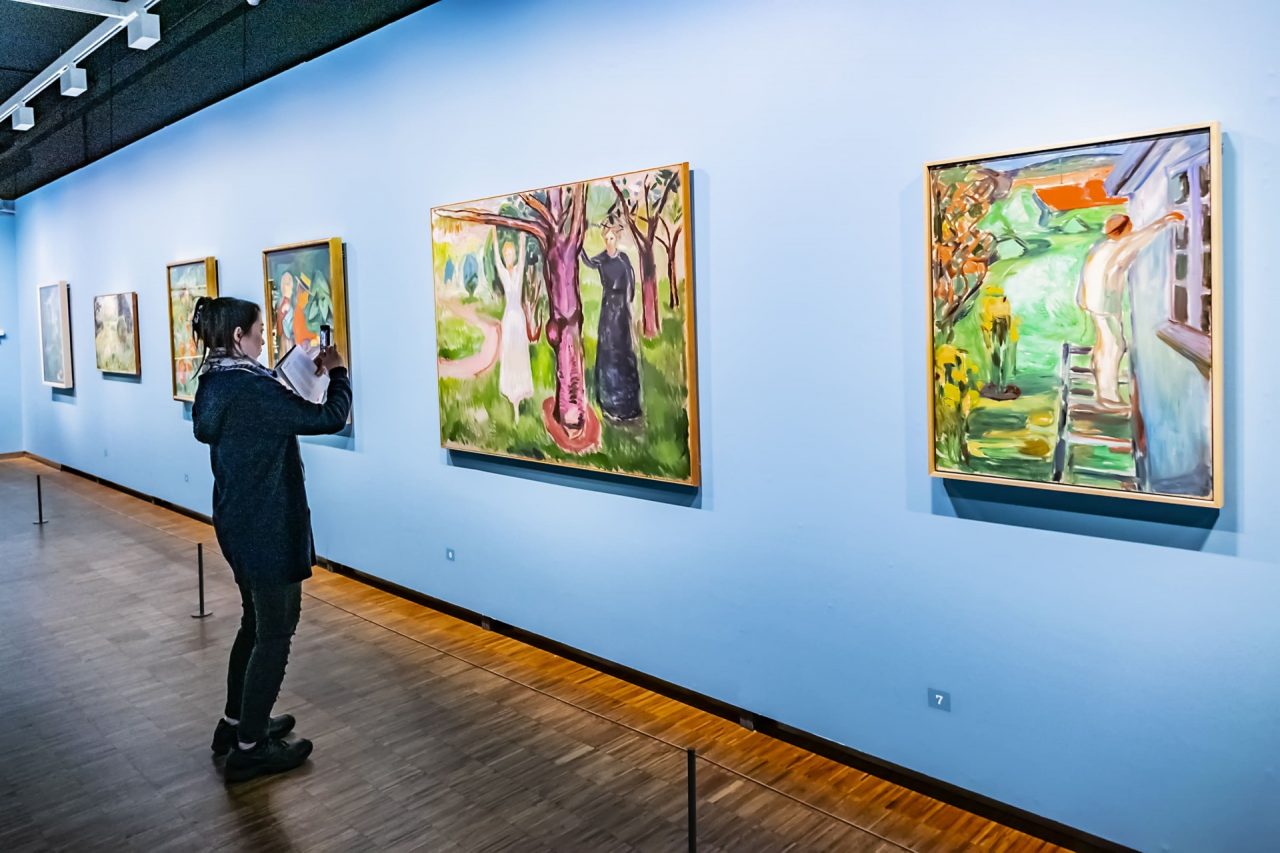A new neighborhood—innovative, with high-end architecture, an emphasis on sustainable lifestyles, and trendy clubs—is taking shape in the area to the east of downtown Oslo. Bjørvika, as it’s known, is rising up among old industrial compounds not far from the sea. The signature space of the area is “the Barcode,” an aptly named, 12-building complex comprising skyscrapers of different heights and widths. It was here that the Munch Museum was inaugurated just a few days ago.
Oslo is the hometown of the Norwegian painter, widely considered one of the greatest artists of modern times.
Beyond the inestimable cultural value of the new museum, which brings together 42,000 objects (including some 28,000 artworks) across 11 exhibition galleries, the Munch Museum is another architectural and infrastructural adventure undertaken by the Norwegian capital. It’s a “shout-out” – much like Munch’s iconic painting, The Scream – to the city’s renewed commitment to modernity, innovation and sustainability.
The technology-focused skyscraper spotlighting Munch Museum
With its thirteen floors, 60-metre (197-foot) height, and 26,000 square metre (27,9862 square foot) surface area, it’s clear that the Munch Museum is going to impact its fjord and the Bjørvika district in ways befitting of its dimensions. A feat of engineering, it’s the brainchild of the avant-garde architecture of Studio Herreros and was designed to integrate seamlessly into the city.
Just like the Stavros Niarchos Cultural Center in the heart of Athens, which was built by the Webuild Group, the Munch Museum immediately became a symbol of its home city. It’s a place not just for meeting and cultural exchange, but also a symbol of the love of modernity felt throughout Oslo and the rest of Norway.
The museum was formerly housed in Tøyen, marred by the 2004 theft of The Scream. Now, the Munch collection will be housed in a hyper-technological tower, “designed to give the MUNCH enigmatic and ever-changing presence in the Bjørvika bay, reflecting the stunning light conditions in Oslo that are constantly changing throughout the day and during the different seasons,” says Jens Richter, one of the project’s architects.
On one hand, the museum aims to tell the story of its featured artist and to serve as the custodian of his legacy. But on another, it’s a manifestation of Oslo’s development, as Juan Herreros, founding partner of the Spanish studio behind the complex, explains. Herreros allows his creation to speak for itself: “The building exudes ‘Okay, here I am.’ I hold the legacy of the most important artist in Norway’s history, and I gaze entranced at Oslo and the fjord, because it is the city and its collective dreams that have built me.”

Aesthetics, beauty, and sustainability conspire to bring art to life
In the design (and subsequent construction) of the museum, aesthetics and beauty were top priorities. As one of the world’s largest institutions dedicated to a single artist, the building’s 60-meter (197-foot) facade has varied degrees of transparency, achieved through a series of translucent and perforated aluminum finishes made to protect the interior from sunlight. Sustainability was also a chief concern. The whole building was constructed with FutureBuilt guidelines in mind. These included halving greenhouse gas emissions relative to the averages of buildings of the same size, as well as implementing a series of policies and initiatives to discourage visitors from bringing their cars. To that end, the museum has no car park, but hosts 200 spaces for bicycles, and is intentionally within easy walking distance of a major public transport hub.
A long journey concluding on the banks of the fjord
There was much buildup—no pun intended—to the construction and eventual inauguration of the Munch Museum. Before this space was created, the collection, which the artist himself had donated to Norway, was housed in a rather anonymous-looking museum building, severely lacking in adequate security systems, especially given its value. So an international competition for architectural ideas was launched. This competition began back in 2008, but the museum took a long time to come to fruition, partly due to cost and partly due to the choice of location, which eventually ended up being right by the sea.
Now that Oslo has its own museum, visitors have begun to come in droves, immersing themselves in the rich collection of the painter’s works, as they admire the urban redevelopment of this major Norwegian metropolis.
“It’s impossible to be satisfied with just one visit,” says the museum’s director, Stein Olav Henrichsen. “The Munch is a museum you’ll have to return to many times.”

